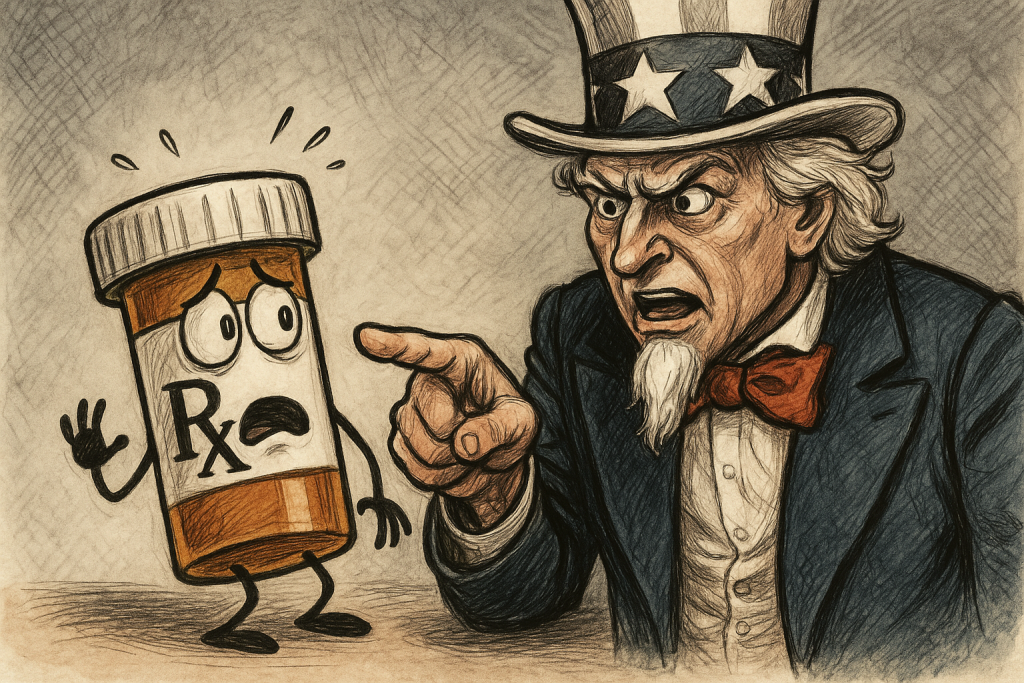
On May 12, 2025, President Donald Trump signed an executive order addressing the high cost of prescription drugs in the United States, focusing on aligning U.S. prices with those in other developed countries. This move, known as the “Most Favored Nation” policy, seeks to address the disparity where Americans often pay significantly more for the same medications sold at lower prices abroad. The executive action has sparked widespread discussion, as it touches on the complex issue of global pharmaceutical pricing, an area shaped by economics, trade policies, and healthcare systems. This article explains the executive order, its potential effects, and the broader context of drug pricing worldwide. The full text of the executive order can be found on the White House website: Executive Order on Delivering Most-Favored-Nation Prescription Drug Pricing to American Patients.
Understanding Global Pharmaceutical Pricing
Pharmaceutical pricing varies widely across countries due to differences in healthcare systems, government regulations, and market dynamics. In the U.S., drug prices are largely determined by market forces, with manufacturers setting prices based on what the market can bear. This results in Americans paying some of the highest prices globally for prescription drugs. For example, a brand-name medication might cost two to three times more in the U.S. than in countries like Canada, France, or the United Kingdom.
In many other developed nations, governments negotiate directly with drug companies to set prices or impose caps to ensure affordability. These countries often have centralized healthcare systems that prioritize cost control, allowing them to secure lower prices. As a result, pharmaceutical companies may offer steep discounts abroad to gain access to those markets, while charging higher prices in the U.S., where there’s less government intervention. The U.S. market, despite representing less than 5% of the world’s population, accounts for a significant portion of global pharmaceutical revenue, largely due to these higher prices.
This pricing imbalance has long been a point of contention. Critics argue that Americans subsidize lower drug prices in other countries, effectively funding global pharmaceutical research and development. The executive order seeks to address this by pushing for price parity, ensuring the U.S. pays rates comparable to those in similar nations.
Key Provisions of the Executive Order
The executive order outlines several steps to reduce U.S. drug prices. It directs the Department of Health and Human Services (HHS) to communicate price targets to pharmaceutical manufacturers within 30 days, urging them to align U.S. prices with the lowest rates offered in comparable developed countries. This “Most Favored Nation” approach would apply to both commercial markets and government programs like Medicare and Medicaid, making it broader than previous efforts.
The order also encourages direct-to-consumer purchasing programs, allowing patients to buy drugs directly from manufacturers at these lower prices, bypassing intermediaries like pharmacy benefit managers. If manufacturers fail to make significant progress toward these price targets, the administration may pursue regulatory actions, such as rulemaking to enforce the policy or expanding drug importation from countries with lower prices, beyond the existing program for Canada.
Additionally, the order calls for action against anti-competitive practices in the pharmaceutical industry, such as deals that delay the entry of cheaper generic drugs. It instructs the Department of Commerce and other agencies to review the export of drugs and ingredients that may contribute to global price differences. The goal is to create a level playing field, reducing the burden on American consumers.
Potential Impacts on the U.S. Healthcare System
The executive order could reshape how prescription drugs are priced in the U.S., with both benefits and challenges. Lower drug prices could ease the financial strain on patients, particularly those with chronic conditions requiring expensive medications. For example opponents on Medicare, who often face high out-of-pocket costs, might see significant savings if prices drop. The policy could also reduce costs for government programs, potentially saving taxpayers billions over time.
However, the pharmaceutical industry has raised concerns about the policy’s feasibility. Lower prices in the U.S. could reduce revenue for drug companies, which rely heavily on the American market to fund research and development. Some fear this might slow the development of new treatments, though the extent of this impact remains uncertain. The industry also argues that importing foreign pricing models could disrupt the U.S. healthcare system, which operates differently from those in other countries.
Legal challenges are another hurdle. A similar policy during Trump’s first term was blocked by federal courts for procedural reasons, and experts suggest this broader order could face similar scrutiny. Without clear legal authority to mandate price reductions, especially in the private market, the policy’s success may depend on voluntary compliance from drug companies or further legislative action from Congress.
Global Implications and Trade Dynamics
The executive order doesn’t just affect the U.S.—it has ripple effects worldwide. By pressuring foreign governments to pay more for drugs, the policy could lead to higher prices in countries accustomed to steep discounts. This could strain healthcare budgets in nations with tightly controlled systems, potentially limiting access to medications for their citizens. Alternatively, some drug companies might choose to exit less profitable foreign markets rather than raise prices, which could reduce global access to certain drugs.
The order also ties drug pricing to trade policy, directing the U.S. Trade Representative and Department of Commerce to address foreign practices that suppress drug prices below market value. This could lead to tensions with allies, as countries like Canada or European nations may resist efforts to alter their pricing models. The threat of tariffs on pharmaceutical imports, another tool mentioned in the order, adds complexity, as it could disrupt supply chains and exacerbate drug shortages, particularly for generics.
Challenges and Uncertainties
Implementing the executive order won’t be straightforward. Setting price targets requires defining which countries’ prices to use as benchmarks and determining how to account for differences in healthcare systems and purchasing power. The 30-day timeline for communicating these targets is ambitious, and negotiations with drug companies could take months. If manufacturers don’t voluntarily lower prices, the administration’s next steps—such as rulemaking or expanded importation—will face logistical and legal obstacles.
Public reaction is another factor. While lower drug prices are widely popular, some worry about unintended consequences, like reduced innovation or access issues. The pharmaceutical industry’s lobbying power adds another layer of complexity, as it has historically resisted policies that cut into profits. Balancing these concerns will be key to the policy’s success.
Summary
President Trump’s executive order on global pharmaceutical pricing marks a bold attempt to address the high cost of prescription drugs in the U.S. by aligning prices with those in other developed nations. By targeting the pricing disparity, encouraging direct-to-consumer sales, and addressing anti-competitive practices, the policy seeks to ease the burden on American patients and taxpayers. However, its success hinges on overcoming legal, logistical, and international challenges. While the potential for lower prices is promising, the broader impacts on innovation, global markets, and healthcare access remain uncertain. As the administration moves forward, the coming months will reveal whether this policy can deliver meaningful change.



